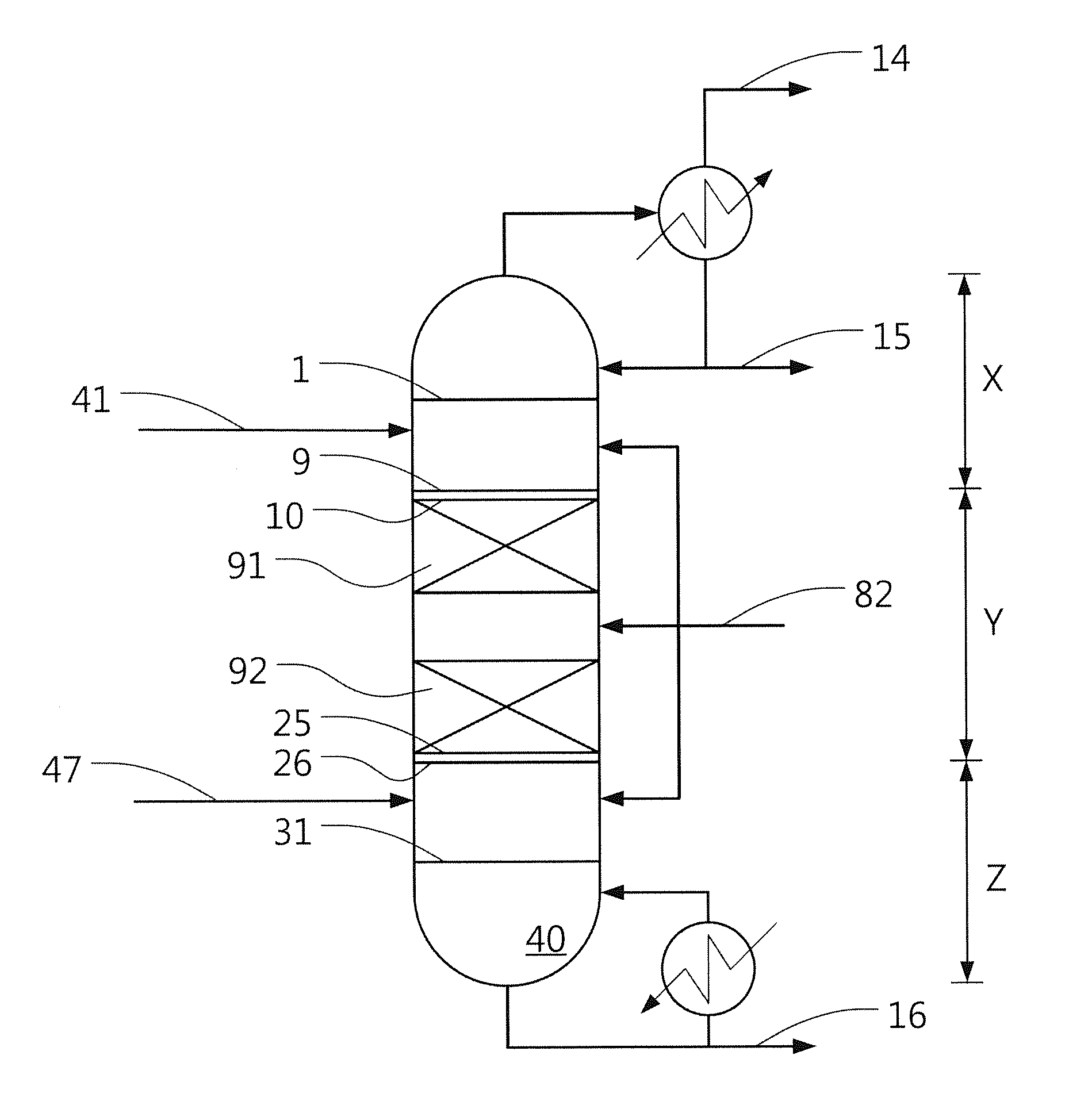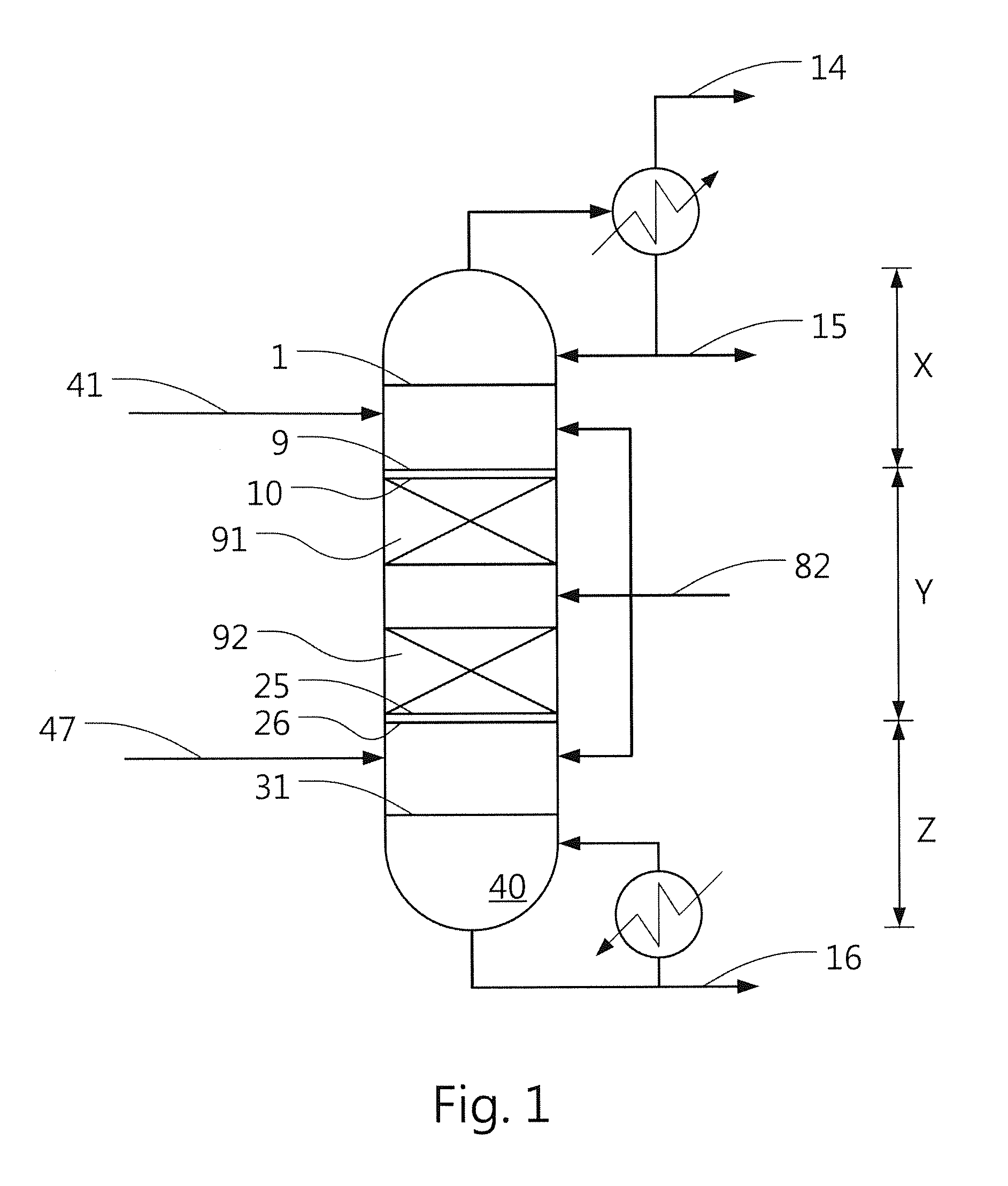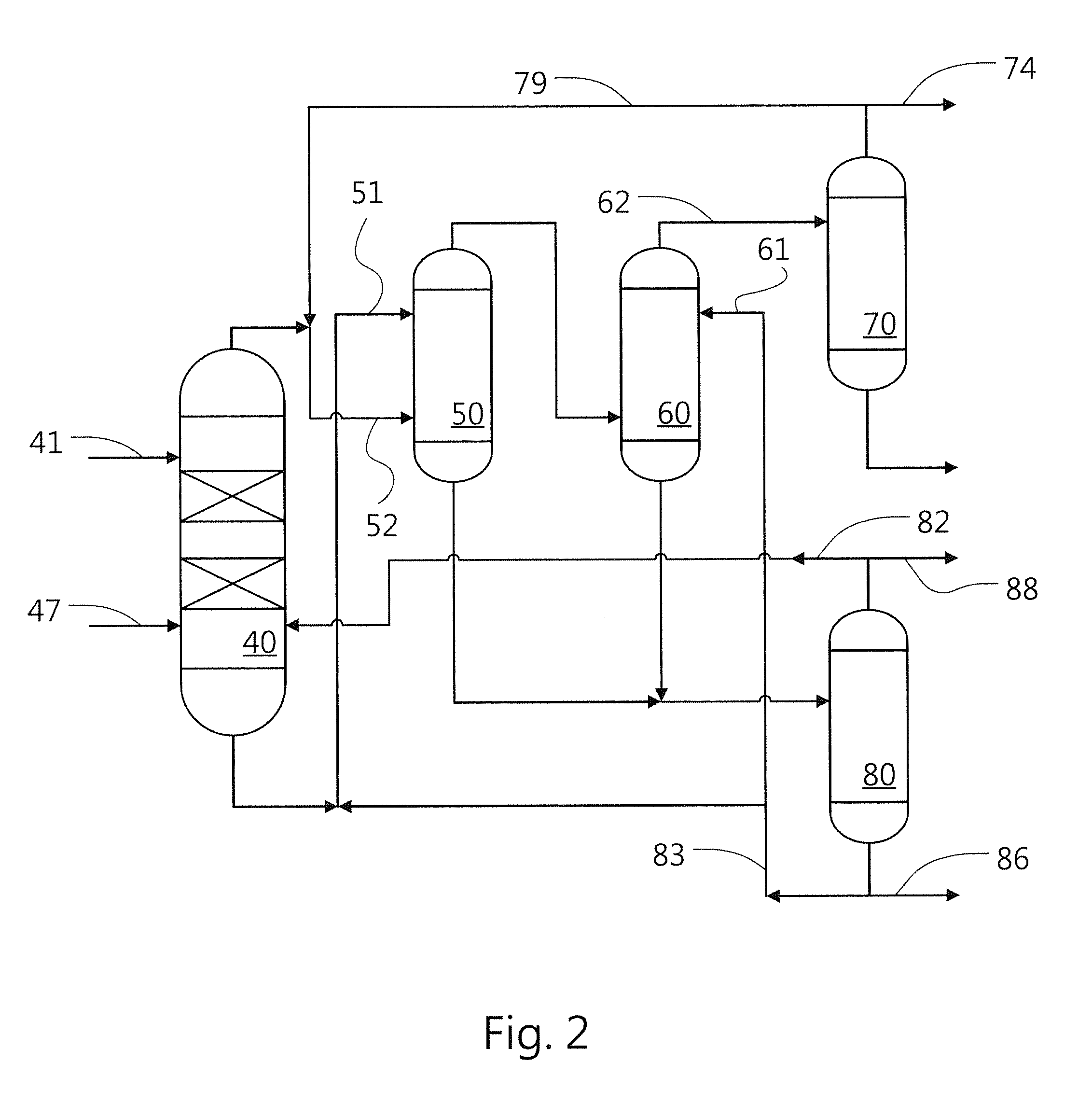Method for coproducing isobutene and mtbe from tert-butanol mixture in a catalytic distillation column
a technology of tert-butanol and catalytic distillation column, which is applied in the direction of ether preparation, hydrocarbon preparation catalyst, compound dehydration, etc., can solve the problems of not being fed methanol to the column, not being consumed and produced, and costing to produce high purity isobutene from those mixtures, etc., to achieve the effect of low freezing point of tba and shipping cheaply
- Summary
- Abstract
- Description
- Claims
- Application Information
AI Technical Summary
Benefits of technology
Problems solved by technology
Method used
Image
Examples
example 1
[0029]The solid state TBA (Merck reagent grade, >99.5%) is melted in a water bath at constant temperature of 45° C. 126.1 gram of TBA is weighted and put into a 500 mL of erlenmeyer flask and 6.3 gram of methanol (Merck reagent grade, >99.9%) is added to the TBA. A clear and transparent solution is obtained. The methanol concentration is 4.76 wt %. A rubber stopper attached to an alcohol thermometer is used to plug the flask. The flask is moved to a refrigerator circulated with ethanol and gradually cooled down from 20° C. The flask is shaked from time to time. The freezing temperature is decreased 0.5° C. for each time after temperature reaches equilibrium between coolant and the solution. Carefully observe the thermometer and if crystal is formed. Record the crystallizing-out temperature. Repeat two times to measure the cloud point of the TBA mixture. The cloud points of TBA mixed with 8.22 wt % and 10.5 wt % of methanol are measured with the above mentioned procedure. Results are...
example 2
[0030]A 13% / 45% / 40% methanol / TBA / water mixture was charged in the reboiler of a pilot-scale catalytic distillation column. The inside diameter of the column was 3 inches and the height was 19 feet. The reaction section was in the middle of the column which was loaded with 427 g of dry Amberlyst 35. Before start-up, the system was blanketed with nitrogen at 1.38 kg / cm2.
[0031]When reboiler was heated, the column pressure was controlled at 3.16 kg / cm2. After the column reached the steady state at total reflux for one hour, a 80% / 20% TBA / methanol mixture was continuously fed above the catalytic zone. The reflux was started and the rate was controlled at 0.8 kg / hr and the control for liquid level across reboiler was turned on. After the column was operated for six hours, six samples were taken. The sampling points are S-1, S-2, S-3 and S-4, which corresponded to 1, 5, 9 and 15 feet high above the reboiler, respectively. Other two samples, S-Top and S-Btm, were taken at the outlet of the ...
example 3
[0035]This example is a base case for exploring the effects of operating parameters on isobutene selectivity.
[0036]Column pressure is set at 3.03 kg / cm2 and total condenser is subcooled at 40° C. The molar ratio of methanol to TBA is 1.0. As reflux ratio and distillate to feed mass ratio are 3.0 and 0.78, the column size can be determined by these column parameters. Then, the calculated catalyst volume per tray is 0.676 m3. The calculated reaction temperature at the catalytic zone is 96.3-99.7° C. The TBA conversion and isobutene selectivity is 99.97% and 51.2%.
PUM
| Property | Measurement | Unit |
|---|---|---|
| temperature | aaaaa | aaaaa |
| molar ratio | aaaaa | aaaaa |
| temperature | aaaaa | aaaaa |
Abstract
Description
Claims
Application Information
 Login to View More
Login to View More - R&D
- Intellectual Property
- Life Sciences
- Materials
- Tech Scout
- Unparalleled Data Quality
- Higher Quality Content
- 60% Fewer Hallucinations
Browse by: Latest US Patents, China's latest patents, Technical Efficacy Thesaurus, Application Domain, Technology Topic, Popular Technical Reports.
© 2025 PatSnap. All rights reserved.Legal|Privacy policy|Modern Slavery Act Transparency Statement|Sitemap|About US| Contact US: help@patsnap.com



